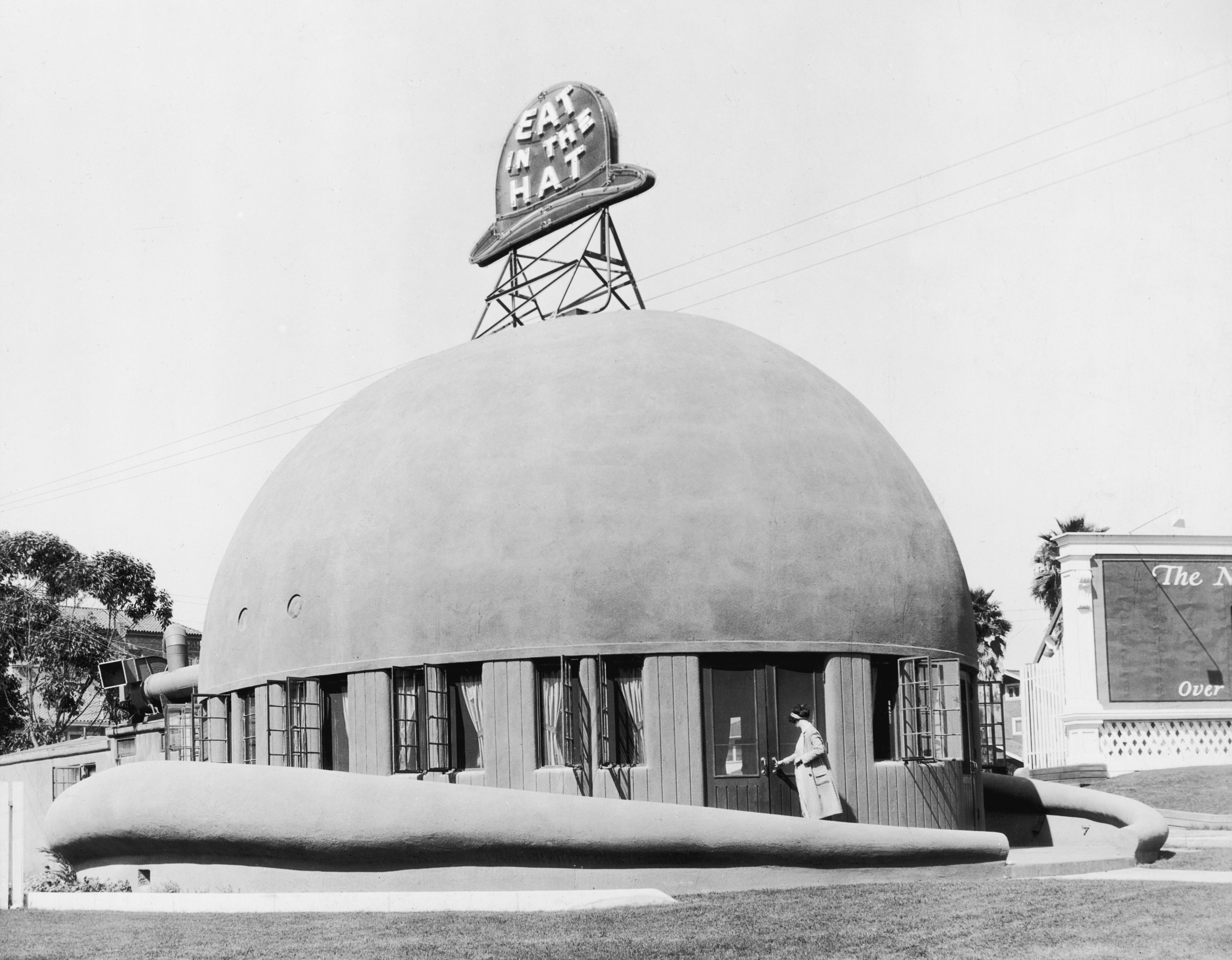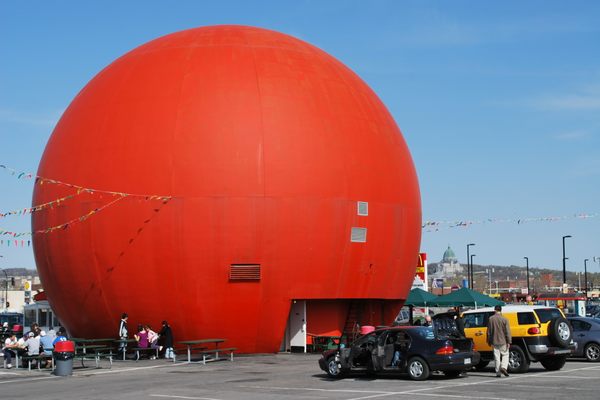Mourners Once Held a Sidewalk Funeral for a Restaurant Named for a Hat
On Valentine’s Day 1994, protestors in Hollywood turned out to eulogize the Brown Derby.

When buildings are knocked down, people often don’t let them go without a fight. This week, we’re remembering some particularly contentious demolitions.
The pallbearers gathered on the sidewalk, their hands gripping the flower-strewn casket and their heads capped with bowler hats. One man hoisted a sign in the air. It was shaped like a tombstone, but read a bit like a death certificate. It diagnosed the building’s cause of death as heartsickness, compounded by years of neglect.
It was February 14, 1994—“a Valentine’s Day heartbreak,” the Los Angeles Times reported, for Hollywood preservationists watching a beloved outpost of a restaurant chain tumble down before their eyes. The crowd, donning jaunty chapeaus, had assembled amid the rattling chorus of tractors, bulldozers, and drills to mourn the loss of the Brown Derby restaurant on Vine Street.
Many locations of the iconic California chain were known for a kooky architectural conceit: restaurants in the shape of brown hats. The Vine Street eatery looked bland by comparison—though a hat-shaped sign did glow atop the roof—but it was particularly famous for what happened inside the wood-paneled dining room. There, gossip flowed like water. Agents and reporters had hobnobbed over cocktails; Marlene Dietrich once strolled through the restaurant in deliciously scandalizing slacks; Clark Gable wooed Carole Lombard in a cozy booth, over brimming drinks and hearty meat swimming in sauce.

Demolition had been progressing for the past few weeks. It wasn’t exactly a surprise. A lease dispute had prompted the restaurant to stop serving nearly a decade earlier. While it sat shuttered, the building was badly damaged by a series of fires; then, when it was shaken by the Northridge earthquake—which splintered freeways, exploded gas mains, and killed dozens of people in January 1994— local officials deemed it beyond repair. “We tried to save the building, but the Building and Safety Department declared in an imminent hazard, and a threat to public safety,” Councilwoman Jackie Goldberg told the L.A. Times.
The protestors weren’t having it. Preservationists worried that demolitions were erasing the traces of Old Hollywood from the landscape, and stamping out the soul of the place in the process.
They chose Valentine’s Day as a poignant moment to mourn, but their lovesick laments were too late. The building kept coming down. “It’s ironic that Disney World just contacted us about building a replica,” Christine O’Brien, a member of the Hollywood Heritage organization, told the L.A. Times a few days before the theatrical funeral. Once this restaurant was ripped down, the L.A. version would “exist only in fantasy,” O’Brien continued. “And isn’t that Hollywood?”






























Follow us on Twitter to get the latest on the world's hidden wonders.
Like us on Facebook to get the latest on the world's hidden wonders.
Follow us on Twitter Like us on Facebook